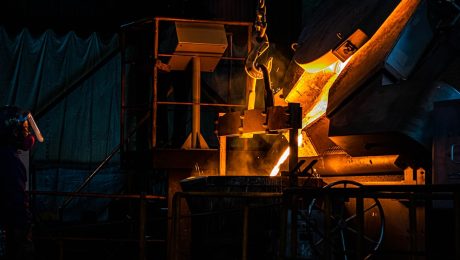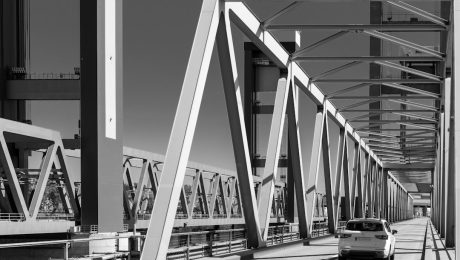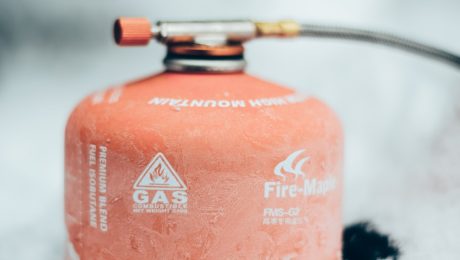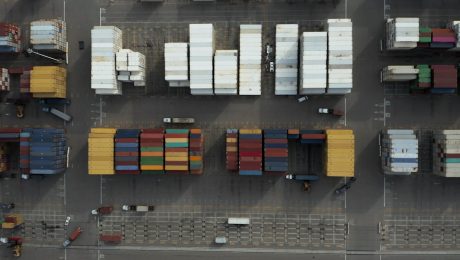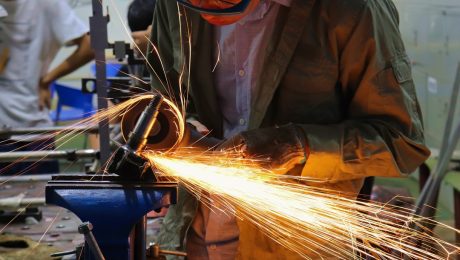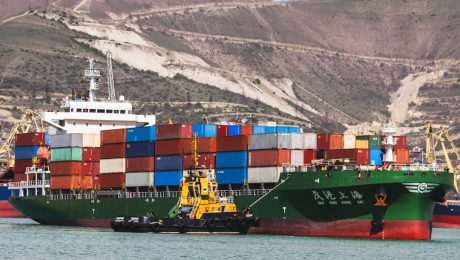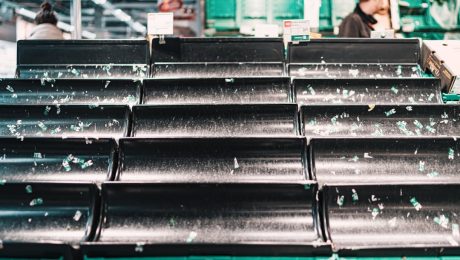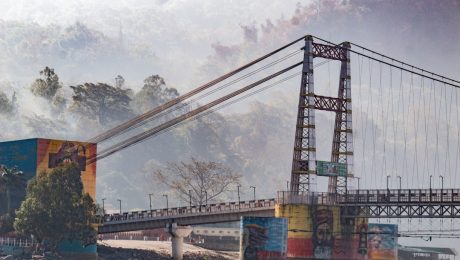Steel pipes are ubiquitous in various industries, from construction and oil & gas to water management and manufacturing. Understanding the different manufacturing processes and resulting properties is crucial for selecting the right pipe for a specific application. This article delves into the key differences between hot-finished and heat-treated steel pipes, clarifying their characteristics and suitability for different projects.
1. The Hot-Finishing Process: Strength and Efficiency
Hot-finishing is a primary steel pipe manufacturing process where steel is heated to a high temperature (above its recrystallization temperature) and then rolled into the desired shape and size. This high-temperature rolling allows for significant deformation, making it ideal for producing large-diameter pipes with relatively thick walls. The process typically involves several stages: heating the steel billet in a furnace, piercing the billet to form a hollow tube (for seamless pipes), further rolling to reduce the diameter and increase the length, and finally, cooling and straightening. The high temperature softens the steel, enabling significant reduction in wall thickness and diameter with less power expenditure compared to cold forming. The resulting pipes possess excellent ductility and relatively high tensile strength, making them suitable for various general applications.
2. Heat Treatment: Enhancing Specific Properties
Heat treatment is a secondary process applied to both hot-finished and other types of steel pipes to enhance specific mechanical properties. It involves carefully controlled heating and cooling cycles to alter the microstructure of the steel. Different heat treatment methods, such as annealing, normalizing, quenching, and tempering, can be used to achieve desired characteristics like increased hardness, strength, toughness, or improved machinability. For example, quenching and tempering can significantly increase the yield strength and tensile strength of a pipe, making it suitable for high-pressure applications. Annealing, on the other hand, reduces internal stresses and improves ductility.
3. Comparing Mechanical Properties: Strength, Ductility, and Hardness
Hot-finished pipes generally exhibit good ductility and tensile strength, but their yield strength and hardness may be lower compared to heat-treated pipes. Heat treatment significantly modifies these properties, allowing for tailored characteristics depending on the specific application. For instance, a heat-treated pipe might possess a higher yield strength, making it suitable for high-pressure applications where yielding is a critical failure mode. Conversely, a hot-finished pipe might be preferred where bending or forming is required, due to its higher ductility.
4. Applications: Where Each Pipe Type Excels
The choice between hot-finished and heat-treated pipes depends heavily on the intended application. Hot-finished pipes are commonly used in applications requiring high ductility and where the demands on strength are moderate, such as general construction, water pipelines, and low-pressure gas lines. Heat-treated pipes, with their enhanced strength and hardness, find applications in high-pressure oil and gas pipelines, pressure vessels, and other critical infrastructure where reliability and resistance to high stress are paramount. The specific heat treatment process further determines the suitability for different applications; for example, a pipe heat-treated for high hardness might be used for wear-resistant applications.
5. Cost Considerations: Balancing Performance and Budget
Generally, hot-finished pipes are less expensive than heat-treated pipes. The additional processing steps involved in heat treatment add to the overall cost. However, the increased cost of heat-treated pipes is often justified by their enhanced properties, which can lead to significant cost savings in the long run by preventing failures and extending the service life of the pipe. The choice often involves a trade-off between initial cost and the long-term performance and reliability required for the specific application.
In conclusion, understanding the differences between hot-finished and heat-treated steel pipes is essential for selecting the appropriate material for a given application. While hot-finished pipes offer a cost-effective solution for general-purpose applications, heat-treated pipes provide superior mechanical properties for demanding high-stress environments. Careful consideration of the required properties, application demands, and cost factors is crucial for making an informed decision.
Tags: hot-finished pipes, heat-treated pipes, steel pipe manufacturing, pipe properties, steel pipe applications
The global steel market is a complex and dynamic entity, influenced by a multitude of interconnected factors. Understanding the forces that shape steel prices is crucial for businesses involved in manufacturing, construction, and investment. This comprehensive analysis delves into the key drivers of global steel price fluctuations, offering insights into current trends and future predictions.
1. Raw Material Costs: The Foundation of Steel Pricing
The price of steel is intrinsically linked to the cost of its raw materials, primarily iron ore and coking coal. Fluctuations in the prices of these commodities directly impact the production cost of steel, leading to corresponding price adjustments in the market. Iron ore prices, heavily influenced by supply from major producers like Australia and Brazil, are often subject to volatility due to geopolitical events, weather patterns affecting mining operations, and changes in global demand. Similarly, coking coal prices, largely determined by supply from Australia and China, are susceptible to similar factors. Furthermore, the energy costs associated with steel production, including electricity and natural gas, play a significant role, particularly in regions with high energy prices. A rise in these raw material and energy costs inevitably translates into higher steel prices, impacting downstream industries and consumers.
2. Global Demand Dynamics: A Balancing Act of Supply and Demand
Global steel demand is a powerful driver of price fluctuations. Construction activity, a major consumer of steel, is heavily influenced by economic growth in various regions. Robust economic expansion in countries like China, India, and the US typically translates into increased demand for steel, pushing prices upward. Conversely, economic slowdowns or recessions lead to decreased demand, resulting in price drops. The automotive industry, another significant consumer, also plays a crucial role. Increased vehicle production drives up steel demand, while production slowdowns have the opposite effect. Furthermore, government infrastructure projects, both in developed and developing nations, significantly impact steel consumption and consequently, pricing. Analyzing global economic indicators and construction activity forecasts is essential for predicting future steel price movements.
3. Regional Variations in Steel Prices: A Geographic Perspective
Steel prices are not uniform globally. Regional variations arise due to several factors including transportation costs, local taxes and duties, and the availability of raw materials and energy. For instance, steel prices in China, the world’s largest steel producer, often influence global prices but may differ from those in Europe or North America due to logistical considerations and government policies. Similarly, regions with abundant raw materials might enjoy lower production costs, leading to more competitive steel prices. These regional disparities create arbitrage opportunities for traders and businesses, impacting the overall dynamics of the global steel market. Understanding these regional nuances is crucial for players operating in specific geographical markets.
4. Geopolitical Factors and Trade Policies: Navigating the International Landscape
Geopolitical events and international trade policies significantly influence steel prices. Trade wars, sanctions, and tariffs can disrupt supply chains, impacting the availability and cost of steel. For example, trade disputes between major steel-producing nations often lead to increased tariffs, making imported steel more expensive and potentially boosting domestic prices. Political instability in key steel-producing regions can also affect supply, leading to price increases. Furthermore, government regulations and environmental policies, such as carbon emission targets, can impact production costs and indirectly influence steel prices. Monitoring geopolitical developments and trade policies is essential for understanding the long-term trends in the steel market.
5. Future Predictions and Investment Implications: Forecasting the Steel Market
Predicting future steel prices is inherently challenging due to the complex interplay of factors discussed above. However, by analyzing historical data, current market trends, and future economic forecasts, analysts can develop informed predictions. Factors to consider include projected global economic growth, infrastructure spending plans, technological advancements in steel production, and the evolving geopolitical landscape. These predictions are crucial for businesses involved in steel manufacturing, trading, and consumption, enabling them to make strategic decisions related to production, inventory management, and investment. For investors, understanding the long-term outlook for steel prices is vital for making informed investment choices, whether in steel companies themselves or in related industries.
In conclusion, the global steel market is a dynamic and complex system. Understanding the interplay of raw material costs, global demand, regional variations, geopolitical factors, and future predictions is crucial for navigating this ever-changing landscape. By carefully analyzing these factors, businesses and investors can make informed decisions to thrive in the global steel market.
SEO Tags:
Global Steel Prices, Steel Market Analysis, Steel Price Forecast, Steel Industry Trends, Raw Material Costs Steel
Steel bridges, symbols of human ingenuity and engineering prowess, grace landscapes worldwide. Their elegant strength and longevity are the result of meticulous design processes, balancing aesthetics with structural integrity. This comprehensive guide delves into the key aspects of designing these magnificent structures.
1. Understanding Load Calculations: The Foundation of Bridge Design
Before a single steel beam is even considered, engineers must meticulously calculate the anticipated loads the bridge will endure throughout its lifespan. This involves far more than just the weight of vehicles. Load calculations encompass:
- Dead Loads: The weight of the bridge itself – the steel members, decking, concrete, and any other permanent fixtures.
- Live Loads: The weight of vehicles, pedestrians, and other moving elements. This requires considering factors like traffic volume, axle configurations of heavy vehicles (like trucks and buses), and even the potential impact of exceptional events (e.g., emergency vehicles).
- Environmental Loads: Forces exerted by wind, snow, ice, and temperature changes. These loads can significantly impact the bridge’s stability, especially in areas with harsh weather conditions. Wind loads, in particular, require sophisticated analysis, often involving wind tunnel testing for complex bridge geometries.
- Seismic Loads: In earthquake-prone regions, seismic loads are crucial. Engineers use sophisticated computer models to simulate the effects of ground shaking and ensure the bridge can withstand these potentially devastating forces.
Accurate load calculations are paramount; underestimating them can lead to catastrophic failure, while overestimating them can result in unnecessarily expensive and bulky designs.
2. Material Selection: Choosing the Right Steel for the Job
The selection of steel is a critical decision, impacting the bridge’s strength, durability, and cost. Various steel grades are available, each with its own properties:
- Yield Strength: The stress at which the steel begins to deform permanently.
- Tensile Strength: The maximum stress the steel can withstand before breaking.
- Ductility: The steel’s ability to deform before fracturing, an important safety factor.
- Weldability: How easily the steel can be joined using welding techniques.
Engineers consider the specific requirements of the bridge—span length, anticipated loads, and environmental conditions—to select the most appropriate steel grade. High-strength steels are often used for longer spans to minimize weight and material costs. Corrosion resistance is also a key consideration, often leading to the use of weathering steels or galvanized steel.
3. Design Considerations: Aesthetics and Structural Integrity
Steel bridge design isn’t solely about structural calculations; aesthetics play a significant role. Engineers must balance the need for a structurally sound bridge with its visual appeal. This involves:
- Arch Bridges: Elegant and efficient for medium to long spans, transferring loads through compression.
- Suspension Bridges: Ideal for very long spans, utilizing cables to support the deck.
- Cantilever Bridges: Suitable for long spans, with the deck extending from intermediate supports.
- Beam Bridges: Simpler designs, often used for shorter spans, using beams to support the deck.
The chosen design influences the selection of steel members (beams, columns, girders), their arrangement, and the overall bridge geometry. Detailed finite element analysis (FEA) is used to simulate the behavior of the bridge under various load conditions, ensuring its structural integrity.
4. Construction Techniques: Bringing the Design to Life
The construction phase requires precise execution to match the design specifications. This involves:
- Fabrication: Steel members are fabricated in workshops according to detailed drawings, often using advanced techniques like laser cutting and robotic welding.
- Erection: The assembled steel components are transported to the construction site and carefully erected. This may involve cranes, specialized lifting equipment, and precise alignment techniques.
- Connection Details: The connection of steel members is crucial for overall structural stability. Bolted connections or welds are carefully designed and executed to ensure proper load transfer.
- Quality Control: Rigorous quality control measures are implemented throughout the construction process to ensure adherence to design specifications and safety standards.
Modern construction techniques, including prefabrication and modular construction, can significantly speed up the process and improve efficiency.
5. Maintenance and Inspection: Ensuring Long-Term Performance
Even the most robust steel bridge requires regular maintenance and inspection to ensure its long-term performance and safety. This includes:
- Regular Inspections: Visual inspections are carried out to detect any signs of corrosion, damage, or deterioration.
- Non-Destructive Testing (NDT): Techniques such as ultrasonic testing and magnetic particle inspection are used to detect internal flaws without damaging the structure.
- Corrosion Protection: Regular painting or other corrosion protection measures are applied to prevent rust and extend the bridge’s lifespan.
- Repair and Rehabilitation: Any necessary repairs or rehabilitation work is carried out promptly to maintain the bridge’s structural integrity.
A well-maintained steel bridge can last for decades, providing safe and efficient transportation for generations to come.
Designing steel bridges is a complex and challenging endeavor requiring expertise in structural engineering, materials science, and construction management. The successful design and construction of a steel bridge are a testament to human ingenuity and the power of engineering.
SEO Tags:
- Steel Bridge Design
- Bridge Engineering
- Structural Steel Design
- Steel Bridge Construction
- Civil Engineering
High-pressure piping systems are critical components in numerous industries, from oil and gas to chemical processing and power generation. The potential consequences of failure are catastrophic, encompassing environmental damage, property destruction, and serious injury or death. Therefore, understanding and implementing robust safety protocols is paramount. This comprehensive guide explores key aspects of high-pressure pipe safety, offering insights into best practices and crucial considerations.
1. Material Selection: The Foundation of High-Pressure Pipe Safety
The choice of pipe material is the cornerstone of a safe high-pressure system. The material must possess sufficient strength and durability to withstand the anticipated pressure, temperature, and corrosive environment. Common materials include carbon steel, stainless steel, and various alloys, each with its own strengths and weaknesses. Carbon steel is widely used due to its cost-effectiveness, but its susceptibility to corrosion necessitates careful consideration of protective coatings and linings. Stainless steel offers superior corrosion resistance, making it ideal for aggressive environments. High-strength alloys are employed when exceptionally high pressures or temperatures are involved. The selection process should consider factors like yield strength, tensile strength, fatigue resistance, and the specific chemical composition of the transported fluid. Proper material specifications, detailed in industry standards and codes (e.g., ASME B31.1, ASME B31.3, API 5L), must be rigorously followed.
2. Regular Inspection and Maintenance: Preventing Catastrophic Failures
Proactive inspection and maintenance are vital for ensuring the long-term safety and reliability of high-pressure piping systems. Regular visual inspections should be conducted to identify signs of wear, corrosion, leaks, or damage. More advanced non-destructive testing (NDT) methods, such as ultrasonic testing (UT), radiographic testing (RT), and magnetic particle testing (MT), are employed to detect internal flaws and weaknesses that may not be visible to the naked eye. The frequency of inspections depends on factors like the pipe material, operating pressure, age of the system, and the nature of the transported fluid. A well-defined inspection program, including detailed procedures and documentation, is essential. Any identified defects should be promptly repaired or addressed through appropriate mitigation strategies. This proactive approach significantly reduces the risk of catastrophic failures.
3. Pressure Testing: Verifying System Integrity
Hydrostatic pressure testing is a crucial step in verifying the integrity of high-pressure piping systems. This involves filling the system with water and gradually increasing the pressure to a level exceeding the maximum operating pressure. The system is carefully monitored for leaks or other signs of weakness. Pressure testing procedures are meticulously defined in relevant industry standards and codes. The test pressure, duration, and acceptance criteria are carefully determined based on the system’s design parameters and operating conditions. Accurate pressure gauges and monitoring equipment are essential to ensure the test’s accuracy and reliability. Successful pressure testing provides confidence that the system can safely operate at its intended pressure.
4. Emergency Procedures and Response: Minimizing the Impact of Accidents
Despite meticulous planning and maintenance, accidents can still occur. Therefore, well-defined emergency procedures are crucial. These procedures should address potential scenarios, such as pipe ruptures, leaks, or fires. Emergency response plans should include clear communication protocols, evacuation procedures, and the designation of responsible personnel. Regular drills and training are essential to ensure that personnel are familiar with their roles and responsibilities in an emergency. Emergency shutdown systems, including quick-closing valves and pressure relief devices, should be readily accessible and regularly tested. The location of emergency equipment, such as fire extinguishers and first-aid kits, should be clearly marked and readily accessible. A robust emergency response plan can significantly minimize the impact of an accident.
5. Regulatory Compliance: Adhering to Safety Standards
High-pressure piping systems are subject to stringent safety regulations and standards. These regulations vary depending on the industry, geographical location, and the nature of the transported fluid. Compliance with these regulations is crucial to ensure the safety of personnel and the environment. Organizations must maintain detailed records of inspections, maintenance, and pressure testing. Regular audits and inspections by regulatory bodies are conducted to verify compliance. Staying informed about changes in regulations and industry best practices is essential for maintaining a safe and compliant high-pressure piping system. Failure to comply with regulations can result in significant penalties, including fines and legal action.
In conclusion, high-pressure pipe safety is a multifaceted discipline that requires a comprehensive approach. By diligently addressing material selection, inspection and maintenance, pressure testing, emergency preparedness, and regulatory compliance, organizations can significantly reduce the risk of accidents and ensure the safe and reliable operation of their high-pressure piping systems.
SEO Tags:
- High-pressure pipe safety
- Pipeline safety regulations
- Pressure testing procedures
- High-pressure piping systems inspection
- Industrial pipe safety
The steel industry is a behemoth, demanding efficient and cost-effective logistics to move massive quantities of material across vast distances. Optimizing steel delivery isn’t just about getting the product from A to B; it’s about minimizing costs, maximizing efficiency, and ensuring timely delivery to meet demanding customer expectations. This post delves into the key strategies for achieving optimal steel delivery logistics.
1. Route Optimization: The Steel Mile’s Smartest Path
Route optimization is arguably the cornerstone of efficient steel delivery. Traditional methods often rely on rudimentary route planning, leading to increased fuel consumption, longer delivery times, and higher labor costs. Advanced route optimization software leverages real-time data, such as traffic conditions, road closures, and even weather forecasts, to dynamically adjust routes for optimal efficiency. These systems consider factors like vehicle capacity, weight restrictions, and delivery windows to create the most cost-effective and time-efficient paths. The benefits extend beyond simple cost savings; optimized routes also reduce carbon emissions, contributing to a more sustainable delivery process.
Furthermore, incorporating advanced features like predictive analytics allows for proactive adjustments to routes based on anticipated delays or disruptions, minimizing the impact on delivery schedules. By integrating GPS tracking with route optimization software, companies can monitor vehicles in real-time, ensuring adherence to planned routes and providing valuable data for future route planning improvements.
2. Inventory Management: Precision in Steel Stock
Effective inventory management is critical for avoiding stockouts and minimizing storage costs in the steel industry. Precise forecasting models, leveraging historical data and market trends, are essential to predict demand accurately. This allows for optimized stock levels, preventing unnecessary storage costs associated with excess inventory while mitigating the risks of running out of crucial materials. Real-time inventory tracking systems provide visibility into stock levels across multiple locations, enabling timely replenishment and preventing production delays.
Implementing a robust inventory management system also involves streamlining the receiving and dispatch processes. Efficient warehouse management systems (WMS) can optimize storage space, reduce handling times, and improve the overall accuracy of inventory data. Integration of the WMS with the transportation management system (TMS) further enhances efficiency, ensuring seamless coordination between inventory levels and delivery schedules.
3. Transportation Management System (TMS): Orchestrating the Steel Symphony
A well-implemented TMS is the conductor of the steel delivery orchestra, coordinating all aspects of the transportation process. This sophisticated software integrates various elements, including route planning, fleet management, and carrier selection, into a unified platform. A TMS provides real-time visibility into the entire transportation network, allowing for proactive management of potential delays and disruptions. It optimizes carrier selection based on factors like cost, reliability, and capacity, ensuring the most cost-effective and efficient delivery options are chosen.
Beyond basic functionalities, advanced TMS systems offer features like load optimization, enabling the efficient consolidation of shipments to maximize vehicle capacity and minimize transportation costs. They also offer features for automated documentation and reporting, simplifying administrative tasks and improving overall operational efficiency. The data gathered by a TMS provides valuable insights into transportation costs, delivery times, and other key performance indicators (KPIs), allowing companies to identify areas for improvement and continuously optimize their logistics processes.
4. Leveraging Technology: From GPS to AI in Steel Delivery
Technology plays a transformative role in modern steel delivery logistics. Beyond route optimization and TMS, other technologies significantly impact efficiency. GPS tracking provides real-time location data, enabling proactive monitoring of shipments and immediate responses to potential delays. Telematics systems go a step further, providing data on vehicle performance, driver behavior, and fuel consumption, allowing for improved fleet management and cost reduction.
The integration of Artificial Intelligence (AI) and Machine Learning (ML) is revolutionizing predictive analytics in steel delivery. AI algorithms can analyze vast datasets to predict demand, optimize routes with greater accuracy, and even anticipate potential disruptions, enabling proactive adjustments to minimize delays. Blockchain technology can enhance transparency and security throughout the supply chain, providing secure tracking of shipments and reducing the risk of fraud.
5. Sustainability in Steel Delivery: A Greener Approach
The steel industry is increasingly focused on reducing its environmental footprint. Optimized logistics play a crucial role in achieving sustainability goals. Route optimization, as discussed earlier, reduces fuel consumption and carbon emissions. The use of alternative fuels, such as biodiesel or electric vehicles, further contributes to a greener delivery process. Consolidating shipments and optimizing load capacity minimizes the number of vehicles on the road, reducing overall emissions.
Implementing sustainable practices also involves optimizing packaging and reducing waste throughout the delivery process. This includes utilizing recyclable materials for packaging and implementing efficient recycling programs for waste generated during transportation and delivery. By adopting a holistic approach to sustainability, steel companies can reduce their environmental impact while enhancing their brand reputation and contributing to a more sustainable future.
By implementing these strategies, steel companies can significantly improve their logistics operations, leading to substantial cost savings, enhanced efficiency, and improved customer satisfaction. The future of steel delivery lies in embracing technology and adopting innovative approaches to logistics optimization, forging a path towards greater efficiency and sustainability.
SEO Tags:
steel delivery logistics, logistics optimization, steel supply chain, route optimization software, inventory management steel
The steel manufacturing industry is a cornerstone of modern infrastructure, but it’s also inherently dangerous. From the intense heat of furnaces to the heavy machinery and sharp materials, the potential for accidents is significant. This comprehensive guide explores the crucial aspects of occupational safety in steel manufacturing, aiming to highlight best practices and contribute to a safer working environment for all.
1. Identifying and Assessing Hazards in Steel Manufacturing
The first step towards a safer workplace is thorough hazard identification. Steel mills present a multitude of risks, broadly categorized as:
- Physical Hazards: These include extreme temperatures (both heat and cold), noise pollution, vibration, exposure to intense light, and the risk of falling from heights (particularly in elevated work areas like platforms and cranes).
- Chemical Hazards: Workers are exposed to various chemicals, including molten metal fumes, dust from raw materials (like iron ore and coal), and cleaning agents. These can cause respiratory problems, skin irritations, and other health issues. Proper ventilation and respiratory protection are crucial.
- Biological Hazards: While less prevalent than physical and chemical hazards, biological hazards can exist in areas with standing water or poor sanitation, potentially leading to infections.
- Ergonomic Hazards: Repetitive tasks, awkward postures, and forceful exertions can cause musculoskeletal disorders (MSDs) like carpal tunnel syndrome and back injuries. Ergonomic assessments and job redesign are essential to mitigate these risks.
- Mechanical Hazards: Heavy machinery, sharp edges, moving parts, and the risk of being struck by falling objects are significant mechanical hazards. Lockout/Tagout procedures are crucial to prevent accidental starts.
- Heat-resistant clothing: This includes specialized suits, gloves, and footwear designed to protect against burns from molten metal and high temperatures.
- Safety helmets: Protecting workers from falling objects and impacts.
- Safety glasses or goggles: Shielding eyes from flying debris, sparks, and intense light.
- Hearing protection: Reducing exposure to harmful noise levels.
- Respiratory protection: Masks, respirators, and self-contained breathing apparatus (SCBA) to protect against harmful fumes, dust, and gases.
- Safety footwear: Steel-toe boots to protect feet from falling objects and crushing hazards.
- Cut-resistant gloves: Protecting hands from sharp edges and materials.
- Fire safety: Including fire drills, fire extinguisher placement and training, and emergency exits.
- First aid and medical response: Designated first aid stations, trained first responders, and clear procedures for contacting emergency medical services.
- Spill response: Procedures for handling spills of molten metal, chemicals, or other hazardous materials.
- Evacuation procedures: Clear routes and assembly points for evacuating the facility in case of emergencies.
- Emergency communication: Systems for alerting workers to emergencies and coordinating response efforts.
- Hazard awareness: Educating workers about the specific hazards present in their work areas.
- Safe work practices: Teaching workers the correct procedures for operating machinery, handling materials, and working safely in different areas of the plant.
- PPE use and maintenance: Training workers on the proper use, care, and limitations of their PPE.
- Emergency procedures: Familiarizing workers with emergency plans and their roles in responding to emergencies.
- Lockout/Tagout procedures: Training on safe procedures for isolating equipment before maintenance or repair.
- First aid and CPR training: Equipping workers with basic first aid and CPR skills.
- Regular safety inspections: Identifying potential hazards and ensuring compliance with safety regulations.
- Accident investigation: Thoroughly investigating all accidents to identify root causes and prevent recurrence.
- Safety audits: Regularly assessing the effectiveness of safety programs and identifying areas for improvement.
- Safety meetings and communication: Providing a forum for workers to raise safety concerns and share best practices.
- Data analysis and reporting: Tracking safety performance indicators and using data to drive improvements.
A robust hazard assessment involves identifying these risks, evaluating their severity and likelihood, and prioritizing control measures.
2. Personal Protective Equipment (PPE) in Steel Mills
Personal Protective Equipment (PPE) is the last line of defense against workplace hazards. In steel manufacturing, appropriate PPE is non-negotiable and includes:
Regular inspection and maintenance of PPE are vital to ensure its effectiveness. Workers must be trained on the proper use and limitations of their PPE.
3. Emergency Procedures and Response in Steel Manufacturing
Having well-defined emergency procedures is paramount. Steel mills need comprehensive plans for:
Regular drills and training are essential to ensure that employees are familiar with emergency procedures and can respond effectively.
4. Comprehensive Training Programs for Steel Workers
Effective training is the cornerstone of a safe steel manufacturing environment. Training programs should cover:
Regular refresher training is necessary to maintain competency and adapt to changes in procedures or equipment.
5. Continuous Improvement and Monitoring of Safety Performance
Occupational safety is not a one-time event; it’s an ongoing process. Continuous improvement requires:
By actively monitoring safety performance and implementing continuous improvement measures, steel mills can create a safer and more productive work environment.
Conclusion: Occupational safety in steel manufacturing is a multifaceted challenge requiring a multi-pronged approach. By prioritizing hazard identification, providing adequate PPE, establishing robust emergency procedures, implementing comprehensive training programs, and fostering a culture of continuous improvement, the industry can significantly reduce workplace accidents and create a safer environment for all its workers.
Tags: Steel Manufacturing Safety, Occupational Safety Steel Mill, Industrial Safety, Workplace Safety, Steel Mill Hazards
In today’s interconnected world, efficient logistics are the backbone of successful global trade. Businesses rely on a seamless integration of maritime and land transportation to deliver goods on time and within budget. This post delves into the key strategies for optimizing your maritime and land logistics, ensuring a competitive edge in the global marketplace.
1. Optimizing Maritime Transportation: Charting a Course to Efficiency
Maritime transport, while cost-effective for bulk goods over long distances, presents unique challenges. Optimizing this leg of the journey requires careful planning and execution. Key considerations include:
- Choosing the Right Vessel: Selecting the appropriate vessel type (container ships, bulk carriers, tankers) is crucial based on the nature and volume of cargo. Factors like speed, capacity, and specialized handling requirements need careful evaluation.
- Port Selection and Management: Efficient port operations are paramount. Choosing ports with minimal congestion, advanced infrastructure, and streamlined customs procedures can significantly reduce transit times and costs. Pre-planning and coordination with port authorities are essential.
- Route Optimization and Scheduling: Utilizing advanced route planning software and considering factors like weather patterns, canal availability (Suez, Panama), and potential disruptions can significantly improve efficiency and reduce delays. Real-time tracking and monitoring are crucial for proactive management.
- Containerization and Cargo Security: Proper containerization and securing cargo are vital for preventing damage and theft. Utilizing standardized containers and implementing robust security measures, including tracking devices and insurance, are essential.
2. Seamless Landside Operations: Bridging the Gap Between Ports and Destinations
The landside leg of the journey, encompassing trucking, rail, and intermodal transportation, is equally critical. Optimizing these operations requires a coordinated approach:
- Intermodal Transportation: Combining different modes of transport (e.g., ship-rail-truck) often offers the most cost-effective and efficient solution. Careful planning and coordination between carriers are necessary to ensure smooth transitions.
- Truckload vs. Less-than-Truckload (LTL): Choosing between full truckload shipments for larger volumes and LTL for smaller shipments depends on cost-effectiveness and delivery time requirements. Strategic consolidation of LTL shipments can improve efficiency.
- Warehouse Management and Inventory Control: Efficient warehouse operations, including inventory management systems and optimized storage strategies, are crucial for minimizing handling times and preventing stockouts. Real-time inventory tracking is key for accurate order fulfillment.
- Last-Mile Delivery: The final leg of the journey often presents the greatest logistical challenges. Optimizing last-mile delivery through route optimization software, efficient delivery networks, and potentially utilizing alternative delivery methods (e.g., drones for specific applications) can significantly impact customer satisfaction.
3. Technology Integration: The Digital Backbone of Modern Logistics
Technology plays a pivotal role in optimizing both maritime and land logistics. Implementing advanced systems can lead to significant improvements in efficiency and cost savings:
- Transportation Management Systems (TMS): TMS software integrates all aspects of the transportation process, providing real-time visibility, route optimization, and efficient communication between stakeholders.
- Warehouse Management Systems (WMS): WMS software optimizes warehouse operations, managing inventory, tracking shipments, and automating tasks such as picking and packing.
- Global Positioning System (GPS) Tracking: Real-time tracking of shipments using GPS enables proactive monitoring, preventing delays, and improving security.
- Blockchain Technology: Blockchain offers enhanced security and transparency in supply chain management, providing immutable records of transactions and improving traceability.
4. Risk Management and Contingency Planning: Navigating Uncertainties
The global logistics landscape is susceptible to various disruptions, including weather events, political instability, and unforeseen delays. Proactive risk management is crucial:
- Diversification of Routes and Suppliers: Reducing reliance on single suppliers or transportation routes mitigates the impact of disruptions.
- Insurance and Cargo Security: Comprehensive insurance coverage protects against loss or damage, while robust security measures minimize the risk of theft or pilferage.
- Contingency Planning: Developing detailed contingency plans for various scenarios, including port closures, natural disasters, and geopolitical events, is essential for maintaining business continuity.
- Real-time Monitoring and Communication: Closely monitoring shipments and maintaining clear communication channels with all stakeholders allows for quick responses to unexpected events.
5. Collaboration and Communication: The Key to Success
Effective collaboration and communication among all stakeholders are essential for seamless integration of maritime and land logistics. This includes:
- Strong Relationships with Carriers and Suppliers: Building strong relationships with reliable carriers and suppliers ensures consistent service and efficient operations.
- Efficient Communication Channels: Utilizing real-time communication tools, such as online platforms and messaging systems, facilitates rapid information exchange and problem-solving.
- Data Sharing and Collaboration Platforms: Sharing data across the supply chain through collaborative platforms improves transparency and coordination.
- Regular Performance Reviews and Optimization: Continuously reviewing and optimizing processes based on performance data ensures continuous improvement.
By implementing these strategies, businesses can achieve a seamless synergy between maritime and land logistics, resulting in optimized efficiency, reduced costs, and enhanced customer satisfaction in the competitive global marketplace.
SEO Tags:
Maritime Logistics, Land Logistics, Supply Chain Management, Global Logistics, Transportation Management
The engineering field is constantly evolving, demanding continuous learning and adaptation. Whether you’re a fresh graduate looking to bolster your knowledge, a seasoned professional seeking specialization, or simply passionate about engineering, access to high-quality educational resources is crucial. This comprehensive guide explores various avenues for enriching your engineering expertise, ensuring you stay ahead of the curve.
Online Courses: The Flexible Path to Engineering Mastery
Online learning platforms like Coursera, edX, Udacity, and FutureLearn offer a vast array of engineering courses, catering to diverse specializations. From introductory courses in fundamental principles to advanced specializations in areas like artificial intelligence, robotics, and sustainable energy, these platforms provide flexibility and accessibility. Many courses offer structured learning paths, including video lectures, quizzes, assignments, and peer-reviewed projects, mimicking the experience of a traditional classroom but with the added benefit of self-paced learning. Look for courses accredited by reputable universities or institutions to ensure quality and potential recognition for professional development.
Furthermore, many platforms offer specialized tracks or certifications. Completing a specialized track can demonstrate your expertise in a specific area to potential employers, enhancing your resume and career prospects. Consider focusing on areas with high demand, such as data science, machine learning, or cybersecurity, to increase your marketability.
Engineering Certifications: Validating Your Expertise
While online courses provide valuable knowledge, professional certifications offer formal recognition of your skills and expertise. Organizations like the Institute of Electrical and Electronics Engineers (IEEE), the American Society of Mechanical Engineers (ASME), and various professional bodies offer certifications in specific engineering disciplines. These certifications often involve rigorous examinations and demonstrate a high level of competency, making you a more attractive candidate for employers.
The process of obtaining a certification often involves completing specific courses or demonstrating practical experience, further solidifying your understanding of the subject matter. Research certifications relevant to your career goals and the specific requirements for each certification before embarking on the process. The investment of time and effort is usually worthwhile in terms of career advancement.
Essential Engineering Books: A Foundation for Knowledge
Despite the rise of online learning, traditional textbooks and reference books remain invaluable resources for engineers. These books provide in-depth explanations of fundamental concepts, detailed examples, and practical applications. They serve as excellent complements to online courses, providing a structured and comprehensive approach to learning. When selecting books, consider the reputation of the author and publisher, the clarity of the writing, and the relevance of the content to your specific area of engineering.
Look for books that cover both theoretical foundations and practical applications. Many engineering books include solved problems and exercises to help reinforce your understanding of the concepts. Building a personal library of essential engineering books is a long-term investment that will pay dividends throughout your career.
Conferences and Workshops: Networking and Hands-on Learning
Attending engineering conferences and workshops offers a unique opportunity to learn from leading experts in the field, network with peers, and stay abreast of the latest advancements. These events often feature presentations, panel discussions, and hands-on workshops, providing a dynamic learning experience that goes beyond traditional classroom settings. Networking with other professionals can open doors to new opportunities and collaborations.
Look for conferences and workshops related to your specific area of interest or specialization. Many professional organizations host regular events, offering valuable opportunities for professional development and networking. Presenting your own work at a conference can also be a great way to showcase your expertise and build your reputation within the field.
Utilizing Open Educational Resources (OER): Free and Accessible Learning
Open Educational Resources (OER) are freely accessible educational materials, including textbooks, videos, and interactive simulations. Websites and repositories like MIT OpenCourseWare, Merlot, and OER Commons provide a wealth of high-quality engineering resources at no cost. This is an excellent option for supplementing paid courses or exploring specific topics in more detail without financial constraints.
While the quality of OER can vary, many resources are developed by reputable institutions and offer a valuable alternative to commercially available materials. Remember to critically evaluate the source and credibility of any OER before relying on it as your primary learning resource. OER can be particularly useful for self-directed learning and exploring advanced topics beyond the scope of formal coursework.
By strategically leveraging these resources, engineers of all levels can significantly enhance their skills and knowledge, ensuring they remain competitive and adaptable in the ever-changing landscape of the engineering world. Remember to tailor your learning path to your specific needs and career aspirations, creating a personalized plan that maximizes your potential.
SEO Tags:
- Engineering Education
- Online Engineering Courses
- Engineering Certifications
- Engineering Books
- STEM Education
GloballSteel stands as a leading provider of high-quality steel products, catering to a wide range of industries and applications. This comprehensive overview delves into the breadth and depth of our product portfolio, highlighting the diverse grades, manufacturing processes, and specialized solutions we offer.
Carbon Steel: The Foundation of Strength
Our carbon steel range forms the bedrock of our product portfolio. These steels, characterized by their relatively simple composition (primarily iron and carbon), offer an excellent balance of strength, ductility, and weldability. We offer a variety of carbon steel grades, each tailored to specific applications. For example, our low-carbon steel (mild steel) is ideal for applications requiring formability and weldability, such as automotive body panels and general construction. Medium-carbon steels provide enhanced strength and are commonly used in machinery components and structural elements. High-carbon steels, with their superior hardness and wear resistance, find applications in tools and cutting instruments.
GloballSteel employs stringent quality control measures throughout the production process, ensuring that our carbon steel products consistently meet or exceed industry standards. We utilize advanced technologies such as continuous casting and hot rolling to optimize the mechanical properties and dimensional accuracy of our products.
Alloy Steels: Enhanced Performance for Demanding Applications
For applications requiring superior strength, corrosion resistance, or specific thermal properties, our alloy steel range provides the ideal solution. By strategically incorporating alloying elements such as chromium, nickel, molybdenum, and manganese, we can fine-tune the properties of the steel to meet the exact demands of the application. For instance, our low-alloy high-strength steels are widely used in the construction of bridges, skyscrapers, and other large-scale structures, offering exceptional strength-to-weight ratios. Our high-alloy steels, on the other hand, are known for their superior corrosion resistance and are frequently used in chemical processing equipment and marine applications.
The precise control over alloying elements and heat treatment processes allows us to deliver alloy steels with consistent performance and reliability, ensuring that our customers receive products that meet their stringent requirements.
Stainless Steel: Resistance to Corrosion and Degradation
GloballSteel offers a wide selection of stainless steels, renowned for their exceptional corrosion resistance and durability. These steels, typically containing at least 10.5% chromium, form a protective chromium oxide layer that prevents rust and degradation. Our range includes austenitic stainless steels (like 304 and 316), known for their excellent formability and corrosion resistance, and ferritic stainless steels, offering a good balance of strength and corrosion resistance. These are used in a vast array of applications, from kitchen appliances and medical instruments to chemical processing equipment and architectural features.
We are committed to providing stainless steel products that meet the highest standards of quality and performance, ensuring long-lasting durability and resistance to harsh environments.
Specialized Steel Products: Tailored Solutions for Unique Needs
Beyond our standard range, GloballSteel offers a variety of specialized steel products designed to meet the unique requirements of specific industries. This includes high-speed steels for cutting tools, tool steels for demanding applications, and spring steels for applications requiring high elasticity. We also offer customized solutions, working closely with our customers to develop steel products with tailored properties and performance characteristics.
Our commitment to innovation and collaboration allows us to provide tailored solutions that meet even the most demanding requirements, ensuring optimal performance and cost-effectiveness for our clients.
Manufacturing Processes: Ensuring Quality and Consistency
GloballSteel employs state-of-the-art manufacturing processes to ensure the quality and consistency of our steel products. These include continuous casting, hot rolling, cold rolling, heat treatment, and surface finishing techniques. Our integrated manufacturing facilities allow for efficient production and stringent quality control at every stage of the process, from raw material to finished product. This commitment to excellence ensures that our customers receive high-quality steel products that meet their specific needs and exceed their expectations.
Continuous investment in advanced technologies and skilled personnel ensures that we remain at the forefront of steel manufacturing, providing innovative solutions and superior quality to our valued customers.
GloballSteel is dedicated to providing high-quality steel products and exceptional customer service. Contact us today to learn more about our comprehensive product portfolio and how we can help you find the perfect steel solution for your needs.
SEO-Friendly Tags:
- GloballSteel
- Steel Products
- Steel Portfolio
- Steel Grades
- Steel Applications
The global steel industry is a dynamic and ever-evolving landscape. To stay ahead of the curve and capitalize on emerging trends, participation in international steel expos is crucial. These events offer a unique platform for networking, learning, and showcasing your company’s capabilities to a global audience. This comprehensive guide delves into the various aspects of participating in these influential events.
Choosing the Right International Steel Expo
Selecting the appropriate expo is paramount. Consider several factors before committing. Firstly, target audience: Does the expo attract the specific buyers, investors, or partners you’re seeking? Research past attendee lists and exhibitor profiles to gauge the quality and relevance of the audience. Secondly, location and reach: A strategically located expo with international reach offers greater exposure. Analyze the geographical distribution of attendees and potential business partners. Thirdly, expo theme and focus: Ensure the expo’s theme aligns with your company’s specialization. Focusing on niche areas like sustainable steel, advanced steel manufacturing processes, or specific steel applications can yield more targeted results. Finally, cost-benefit analysis: Carefully evaluate the costs involved – booth space, travel, accommodation, marketing materials – against the potential return on investment (ROI). Consider the size and reputation of the expo in relation to your budget.
Maximizing Your Expo Presence: Booth Design and Strategy
Your booth is your company’s storefront at the expo. A well-designed booth attracts attention and conveys professionalism. Consider the following elements: Visual appeal: Use high-quality visuals, including product samples, videos, and compelling graphics. Ensure your branding is consistent and easily recognizable. Interactive elements: Incorporate interactive displays, demonstrations, or virtual reality experiences to engage visitors. Handouts, brochures, and digital materials should be readily available. Strategic placement: The location of your booth can significantly impact foot traffic. Opt for a high-visibility location if your budget allows. Staff training: Train your staff to effectively engage visitors, answer questions, and collect leads. Equip them with product knowledge and sales materials. Furthermore, develop a clear strategy for lead generation and follow-up. Collect contact information, qualify leads, and establish a system for post-expo follow-up.
Networking and Building Relationships at Steel Expos
International steel expos are unparalleled networking opportunities. Prioritize building relationships with potential clients, suppliers, and industry experts. Pre-expo networking: Connect with attendees and exhibitors beforehand through online platforms like LinkedIn. Schedule meetings and arrange appointments in advance. Active participation: Attend conferences, seminars, and networking events organized alongside the expo. Engage in discussions, share your expertise, and actively listen to others. Follow-up: After the expo, follow up with the contacts you made. Send personalized emails, share relevant information, and nurture relationships over time. Remember, networking is a long-term investment. Building strong relationships can lead to sustained growth and partnerships.
Leveraging Technology for Enhanced Participation
Technology plays a crucial role in maximizing your expo participation. Virtual reality (VR) and augmented reality (AR): These technologies can enhance your booth’s appeal and allow for immersive product demonstrations. Digital marketing: Utilize social media and online advertising to promote your expo presence and engage with potential attendees before, during, and after the event. Lead capture tools: Implement digital lead capture tools to efficiently collect contact information and qualify leads. Data analytics: Track your expo performance using data analytics to measure ROI and identify areas for improvement. By integrating technology effectively, you can significantly enhance your visibility and engagement at the expo.
Post-Expo Analysis and Follow-Up Strategies
The work doesn’t end when the expo concludes. A thorough post-expo analysis is essential to assess your success and plan for future participation. Lead follow-up: Immediately follow up with leads collected at the expo. Personalize your communication and offer valuable content. Data analysis: Analyze the data collected during the expo, including lead generation, booth traffic, and visitor demographics. Identify areas of strength and weakness. ROI calculation: Calculate the return on investment (ROI) of your expo participation. This will help justify future investments and refine your strategy. Feedback collection: Gather feedback from your team and attendees to identify areas for improvement in your booth design, marketing materials, and overall approach. This continuous improvement cycle is crucial for maximizing your future expo participation.
Participating in international steel expos offers invaluable opportunities for growth and expansion. By carefully planning your strategy, maximizing your booth presence, and effectively networking, you can unlock significant business potential. Remember that consistent participation and continuous improvement are key to long-term success in this competitive industry.
SEO Tags:
steel expo, international steel expo, steel industry events, global steel market, steel trade shows


